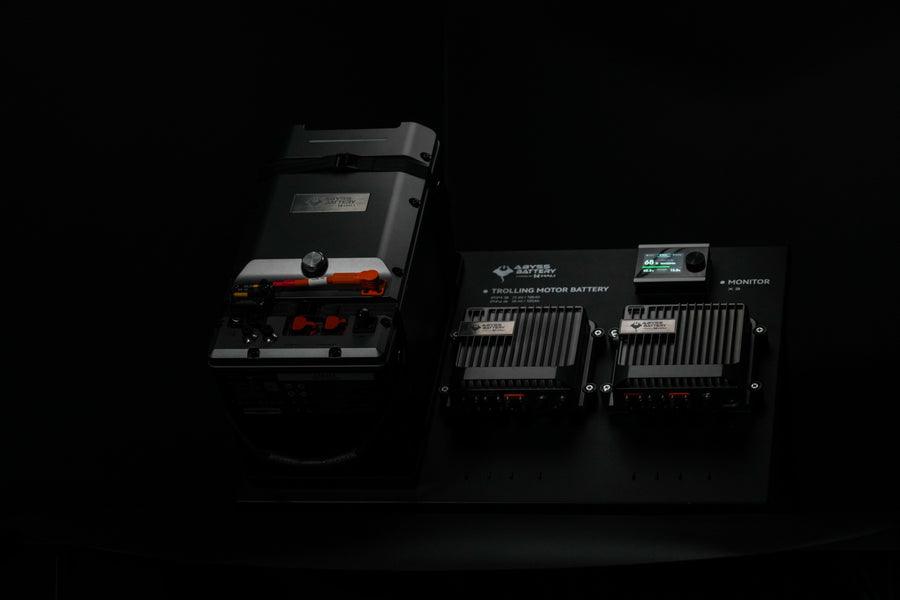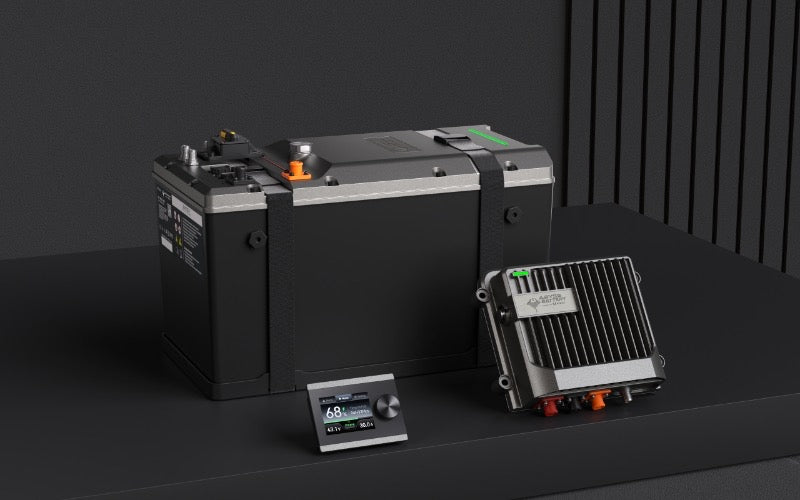Not All Marine Battery Chargers Are Created Equal: Choosing the Right Charger for Your Lithium System

When it comes to marine lithium batteries, one of the most overlooked components in the entire power system is the charger. Just because a charger says “12V,” “24V,” or “36V” doesn’t mean it’s safe—or even compatible—with lithium batteries. In fact, using the wrong charger can dramatically reduce performance, shorten battery life, and even damage your investment.
Let’s break down what makes a great marine charger, why compatibility matters, and how Abyss Battery® High-Precision Marine Chargers are engineered differently to deliver maximum performance and safety on the water.
1. Why Charger Compatibility Matters
Lithium iron phosphate (LiFePO₄) batteries require a constant current and constant voltage charging profile with precise cut-off voltages and no float or trickle stages. Traditional marine chargers are designed for lead-acid batteries and often include absorption or float modes that can overcharge or unbalance lithium cells over time.
If you use a charger that’s not truly designed for lithium, you might notice uneven cell voltages, early low-voltage cutoffs, reduced cycle life, inaccurate state-of-charge readings, or even the battery’s internal BMS shutting down to protect itself.
2. What to Look for in a Marine Lithium Charger
When choosing a charger for a lithium system, make sure it’s built with a dedicated LiFePO₄ charge profile that maintains the correct voltage curve. It should also feature intelligent protection to prevent over-charging and over-temperature issues, and it must be fully waterproof to survive the marine environment.
Look for a charger that uses true CC/CV regulation, supports independent bank charging if you run multiple batteries, and includes short-circuit, reverse polarity, and over-temp protection. Chargers with low-noise output are also important on boats with sensitive electronics.
3. Common Charger Types Explained
There are three main categories of chargers on the market. Lead-acid smart chargers are inexpensive and easy to find, but they aren’t lithium-compatible and can damage LiFePO₄ batteries by maintaining a constant float voltage. Generic “lithium-compatible” chargers are often marketed toward RV or small off-grid setups, but they rarely use the correct voltage curve or meet marine sealing standards.
Then there are high-precision marine lithium chargers like those built by Abyss Battery®. These units use the proper lithium charging algorithm, are fully waterproof, and include independent outputs that allow multiple batteries to be charged safely and efficiently.
4. Choosing the Right Charger for Your System
Selecting the correct charger isn’t just about matching voltage—it’s about matching the charger’s behavior to your boat’s setup and your battery capacity.
For 12-volt systems, such as house batteries, electronics, refrigeration, lighting, or engine-start batteries, the Abyss 12V 10A or 20A High-Precision Lithium Charger is a great fit.
For 24-volt systems, typically used in dual-motor setups or smaller offshore and bay boats, use the Abyss 24V 10A or 20A High-Precision Charger to maintain a balanced charge curve and extend battery life.
For 36-volt systems, which are common in high-thrust trolling motors, offshore center consoles, and bass boats, the Abyss 36V 10A or 20A High-Precision Lithium Charger is ideal.
If you want to charge your trolling bank directly from your outboard’s alternator while underway, the Abyss SHARK® Bi-Directional DC-DC Charger safely transfers energy between your 12V start and 24V or 36V trolling batteries automatically.
For more complex systems that include multiple banks—such as a house battery plus trolling setup—the Abyss Multi-Bank Charger independently charges and balances each battery for consistent performance across the system.
Every Abyss charger is marine-rated to IP65 or higher, built for saltwater durability, and programmed with a true lithium algorithm for safe, efficient charging. They’re designed to complement the same Grade-A LiFePO₄ cells and smart BMS technology found inside every Abyss Battery®.
5. Why Charge Rate Matters: Faster Isn’t Always Better
One of the biggest misconceptions about lithium batteries is that faster charging automatically means better performance. While Abyss chargers can deliver high output, charging too quickly can create excess heat and stress the cells, which shortens the overall cycle life of the battery.
Each Abyss Battery® includes a built-in Battery Management System that protects against over-voltage, over-current, and high temperature, but longevity still depends on using a charger with the right amperage for your battery’s capacity.
For example, 36V 60Ah batteries—such as the Abyss G31 Series—perform best with the Abyss 36V 10A High-Precision Charger. This rate provides a balanced, efficient charge that keeps internal temperatures low and avoids accelerated wear.
Larger batteries like the 36V 75Ah and the 36V 105Ah SEAL® can safely handle the Abyss 36V 20A Charger, allowing faster recovery between trips without compromising long-term health.
Charging above the recommended rate can increase internal resistance, raise heat, and reduce the total number of charge cycles your battery can deliver. Using a properly matched charger helps maintain cooler operation, allows the BMS to balance cells accurately, and preserves long-term capacity.
Pro Tip: For routine charging or overnight top-offs, use the lower-amp charger whenever possible. You’ll extend your battery’s life and maintain peak performance trip after trip.
6. The Bottom Line
A battery is only as strong as the charger behind it. Investing in a true marine-grade lithium charger is the easiest way to protect your system, maximize runtime, and ensure years of dependable power.
When reliability and safety matter most, trust the charger built from the same DNA as your battery—engineered for endurance, precision, and the open water.
Abyss Battery® — Power Without Compromise.




Leave a comment